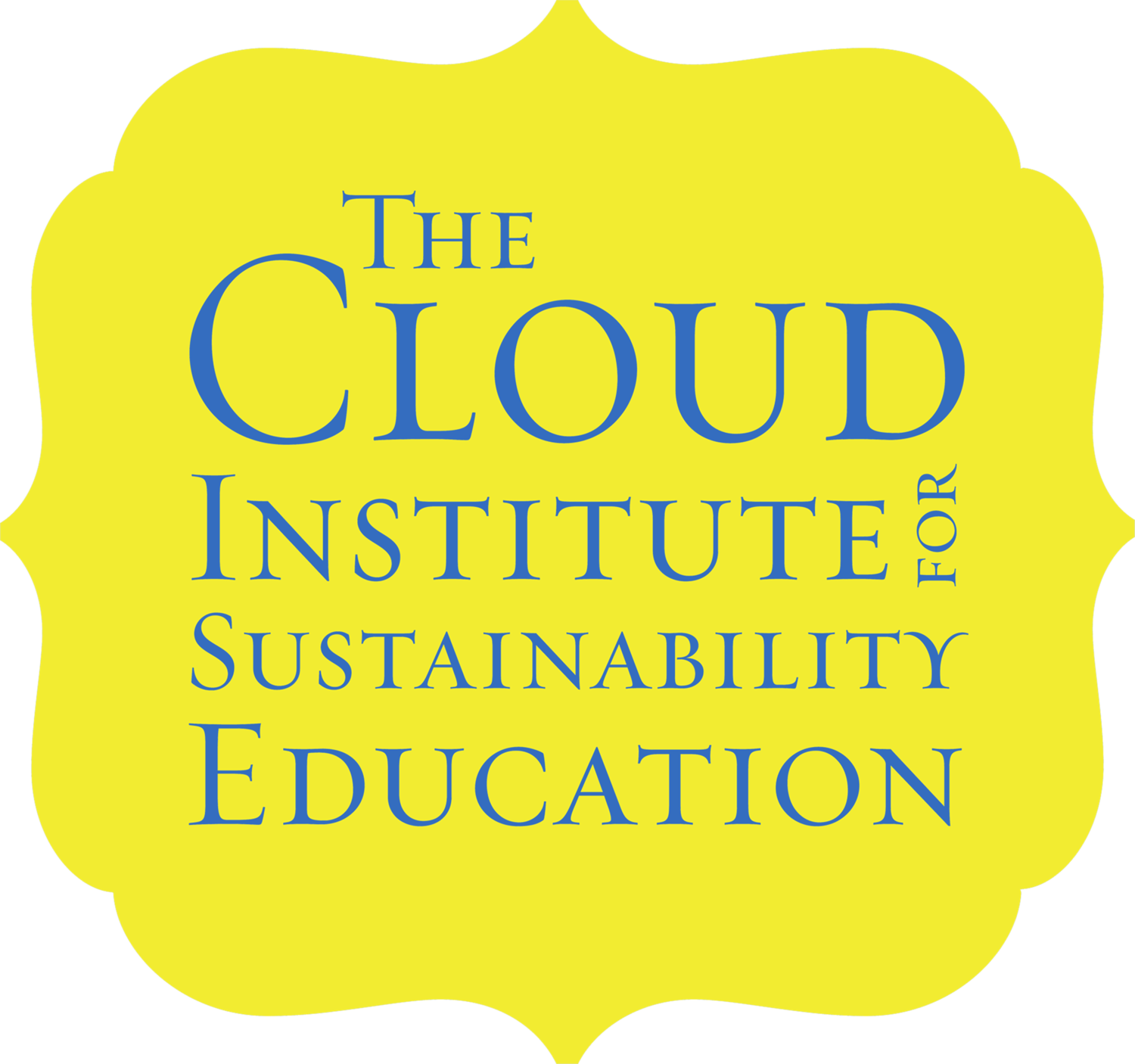Education for Sustainability Standards and Performance Indicators
“We must educate our children in what no one knew yesterday and prepare our
schools for what no one knows yet.” — Margaret Mead
The knowledge, skills, attitudes and habits of mind of Education for Sustainability (EfS) are embedded in The Cloud Institute's EfS Standards and corresponding Performance Indicators.
Aligned to national and state educational standards, each EfS Standard has a set of coded Performance Indicators used to guide educators as they infuse their school culture, curriculum, instruction and assessment practices with Education for Sustainability. We believe that by meeting these EfS standards, young people will be prepared to participate in, and lead with us, the shift toward a sustainable future.
The Cloud Institute's EfS Standards and Performance Indicators are available on the Rubicon Atlas Curriculum Mapping system. Contact us if your school is using Atlas and would like access.
Download the Cloud Institute EfS Standards and Performance Indicators
Commencement Edition PreK-2 Edition EfS K-12 Scope & Sequence Aligned to Common Core Aligned to Mindfulness & Creativity Aligned to Cultural Competency Aligned to E Ola! (live on!) Learner Outcomes at Kamehameha
Arabic Translation (Attribution to Qatar Foundation) PreK-2 Arabic Translation
THERE ARE NINE CORE CONTENT STANDARDS
|A| Cultural Preservation & Transformation The preservation of cultural histories and heritages and the transformation of cultural identities and practices that contribute to sustainable communities. Students will develop the ability to discern with others what to preserve and what to change in order for future generations to thrive.
|B| Responsible Local & Global Citizenship The rights, responsibilities, and actions associated with leadership and participation toward healthy and sustainable communities. Students will know and understand these rights and responsibilities and assume their roles of leadership and participation.
|C| The Dynamics of Systems & Change A system is made up of two or more parts in a dynamic relationship that forms a whole whose elements ‘hang together’ and change because they continually affect each other over time. Students will know and understand the dynamic nature of complex systems and change over time. They will be able to apply the tools and concepts of system dynamics and systems thinking in their present lives, and to inform the choices that will affect our future.
|D| Sustainable Economics The evolving set of theories and practices of economics that integrates the economic, and social systems with the ecological systems required to support and maintain life on the planet. Students will know and understand 21st century economic practices and will produce and consume in ways that contribute to the health of the financial, social, and natural capital.
|E| Healthy Commons Healthy Commons are that upon which we all depend and for which we are all responsible (i.e., air, trust, biodiversity, climate regulation, our collective future, water, libraries, public health, heritage sites, top soil, etc.). Students will be able to recognize and value the vital importance of the Commons in our lives and for our future. They will assume the rights, responsibilities, and actions to care for the Commons.
|F| Natural Laws & Ecological Principles The laws of nature and science principles of sustainability. Students will see themselves as interdependent with each other, all living things, and natural systems. They will be able to put their knowledge and understanding to use in the service of their lives, their communities, and the places in which they live.
|G| Inventing & Affecting The Future The vital role of vision, imagination, and intention in creating the desired future. Students will design, implement, and assess actions in the service of their individual and collective visions.
|H| Multiple Perspectives The perspectives, life experiences, and cultures of others, as well as our own. Students will know, understand, value, and draw from multiple perspectives in order to co-create with diverse stakeholders shared and evolving visions and actions in the service of a healthy and sustainable future locally and globally.
|I| Strong Sense Of Place The strong connection to the place in which one lives. Students will recognize and value the interrelationships between the social, economic, ecological, and architectural history of that place and contribute to its continuous health.

